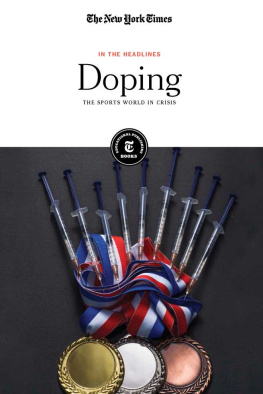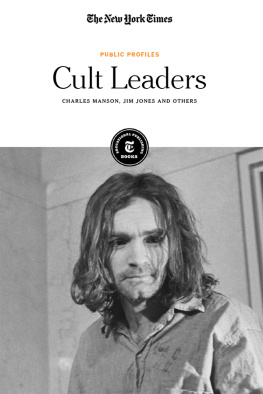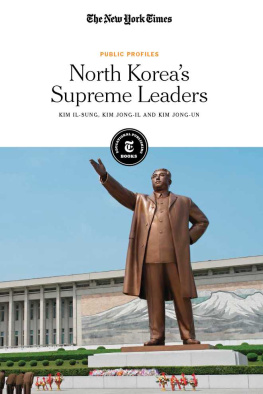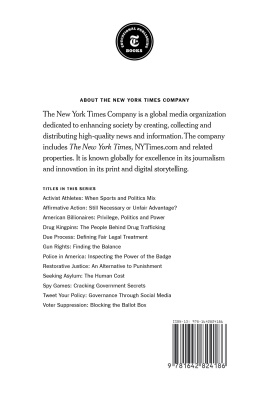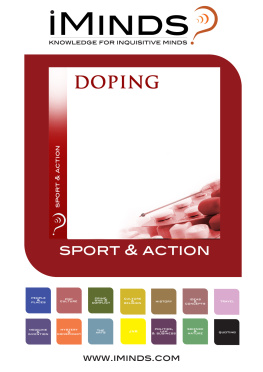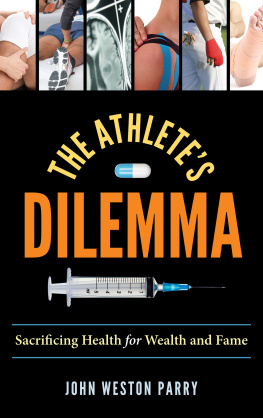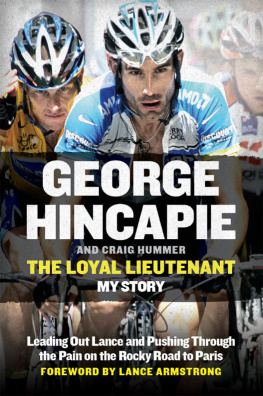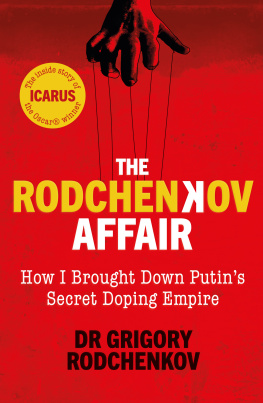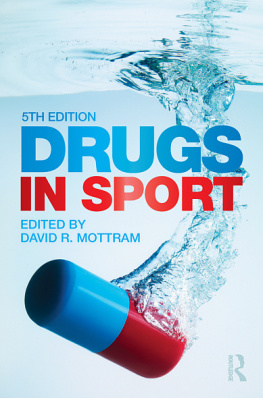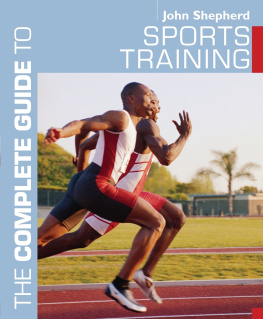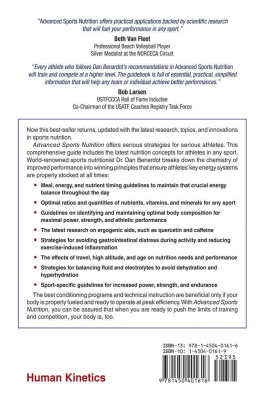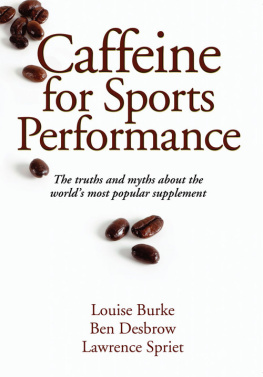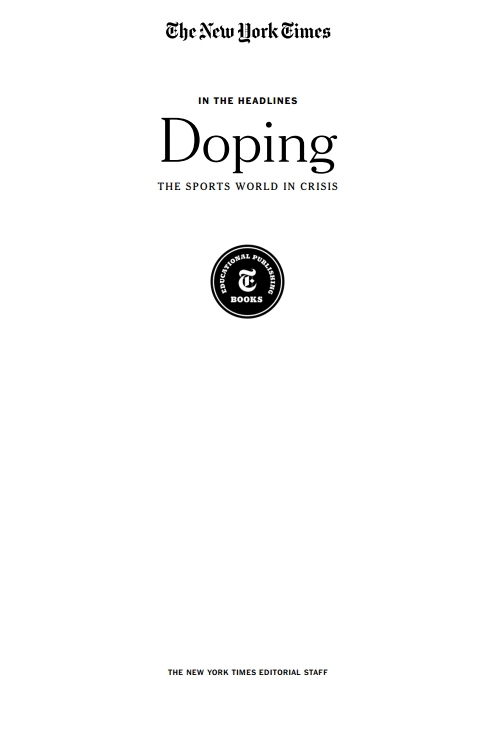Published in 2019 by The New York Times Educational Publishing in association with The Rosen Publishing Group, Inc.
29 East 21st Street, New York, NY 10010
Contains material from The New York Times and is reprinted by permission. Copyright 2019 The New York Times. All rights reserved.
Rosen Publishing materials copyright 2019 The Rosen Publishing Group, Inc. All rights reserved. Distributed exclusively by Rosen Publishing.
First Edition
The New York Times
Alex Ward: Editorial Director, Book Development Phyllis Collazo: Photo Rights/Permissions Editor Heidi Giovine: Administrative Manager
Rosen Publishing
Megan Kellerman: Managing Editor Xina M. Uhl: Editor Greg Tucker: Creative Director Brian Garvey: Art Director
Cataloging-in-Publication Data
Names: New York Times Company.
Title: Doping: the sports world in crisis / edited by the New York Times editorial staff.
Description: New York : New York Times Educational Publishing, 2019. | Series: In the headlines | Includes glossary and index. Identifiers: ISBN 9781642821161 (library bound) | ISBN 9781642821147 (pbk.) | ISBN 9781642821154 (ebook)
Subjects: LCSH: Doping in sportsJuvenile literature. |
AthletesDrug useJuvenile literature.
Classification: LCC RC1230.D677 2019 | DDC362.29'088796dc23
Manufactured in the United States of America
On the cover: The use of performance-enhancing substances is banned in sports, but doping continues to be an issue; MirageC/ Moment Open/Getty Images.
Contents
Introduction
as long as sports competitions have existed, there has been the temptation for the athletes and those associated with them coaches, trainers, doctors and others to cheat. In the modern era one form of cheating is called doping, which involves the use of illegal substances or methods to make athletes perform better. It can also refer to attempts to tamper with doping controls and refusing to take drug tests.
There are five different classes of banned drugs. Stimulants and hormones are the most common. These drugs are effective at enhancing performance. However, they also have negative physical effects. Stimulants increase athletes blood flow and heart rate to make them more alert and to diminish exhaustion, but they can also cause heart failure and addiction.
Athletes may make use of masking agents and diuretics to hide drug use by removing fluid from the body. Cannabinoids and narcotic analgesics are used for pain, but they are addictive and can make injuries worse. Glucocorticoids are anti-inflammatories that cover up serious injuries.
Anabolic steroids give athletes the ability to build muscle and train harder. They can be administered orally in tablet form, injected into the muscles or applied to the skin in gels or creams. Side effects involve aggression and kidney damage. Less serious side effects include low sperm count and baldness for men and deepened voices and increased facial hair for women.
Peptide hormones increase muscle mass and strength. These substances give athletes more energy by increasing red blood cells. Beta blockers are used to lower the heart rate and keep hands from trembling in sports such as shooting and archery.

TIM DE WAELE/VELO/GETTY IMAGES
Lance Armstrong celebrates his Tour de France victory in 1999. His seven consecutive wins were voided in 2012 after his use of performance-enhancing drugs was discovered.
Blood doping involves removing athletes blood and increasing their oxygen levels by injecting it back into their bodies. This practice can result in heart failure and kidney failure.
Despite the dangers of these substances, athletes, coaches, sports organizations and others have made liberal use of them. The desire to win at all costs is potent motivation for such actions. Organizations such as the World Anti-Doping Agency (WADA) work toward ensuring that sports worldwide are free of doping. In the United States, the U.S. Anti-Doping Agency (USADA) functions as the national anti-doping organization for the Olympics, Paralympics and other sports.
This collection of articles looks at the issue of doping in sports from different angles. Chapter 1 traces early problems with the doping of racing animals and in the Olympics and the move toward regulation of substances that enhance performance. Chapter 2 explores the issues encountered as antidoping laws were put into place as well as the effects of various performance-enhancing drugs. Chapter 3 focuses on doping fraud committed by individuals and organizations and on dissenting views about antidoping efforts. Chapter 4 looks at a number of high-profile doping scandals in cycling, baseball and the Olympics. Chapter 5 covers problems with doping regulations, from the possibility of competitors sabotaging athletes to issues with a lack of valid data and resistance of certain organizations to following antidoping standards. Chapter 6 involves advances in pharmacology, lawmaking about performance-enhancing drugs and continuing attempts to fool the antidoping systems.
The sports world continues to make headlines as individuals and organizations alike navigate competing pressures to succeed in high stakes events and to also follow antidoping regulations. With legal and ethical issues at play, the controversy of doping is multi-faceted and demands careful reporting.
CHAPTER 1
Problems and Protections
Money played a big role in athletic competitions in the early 20th century, especially when it came to races by dogs and horses. Racing promoters didn't hesitate to use drugs to enhance the performance of racing animals, making it necessary to create laws to limit such fraudulent behavior. Olympic athletes, coaches and promoters often gave in to the temptation to use performance-enhancing drugs as well. The establishment of testing procedures took decades to implement, and even then they were not always effective.
U.S. Orders State Racing Bodies to Eliminate Doping of Horses
BY THE NEW YORK TIMES | MARCH 29, 1936
Washington, march Americas reputed $500,000,000 race-horse business is under the close scrutiny of the Federal Government in connection with the nation-wide drive against the use of narcotics to stimulate or depress the running ability of the animals.
As the horses were about to go to the barriers in many Spring meets, Harry J. Anslinger, chief of the Federal Bureau of Narcotics, announced that the State Racing Commissions would have one more opportunity to clean up their own back yards, but that if they failed, drastic Federal action would follow.
The tentative draft of a law already has been prepared by the Treasury to prohibit the interstate shipment of drugged horses for racing purposes and to deny track licenses to persons guilty of this practice.
The draft is regulatory in nature, based on the principle of the Securities Act, to prevent frauds against the public. The proposed law will be held in abeyance and will be introduced only if the State commissions fail to eliminate or properly regulate the hopping of horses.
Mr. Anslinger is determined to see that horse hopping is successfully outlawed. He said today that while the Narcotic Bureau does not have the agents actually to patrol the tracks, except in emergency cases, the Federal Government will prosecute under the Harrison Anti-Narcotic Law all cases of importance reported by the State commissions.

